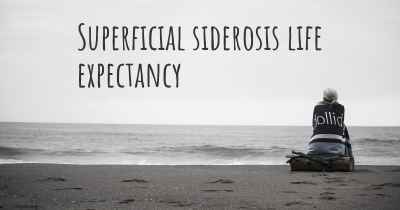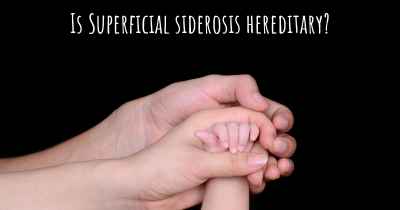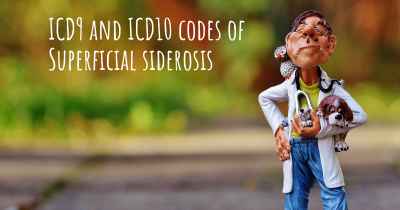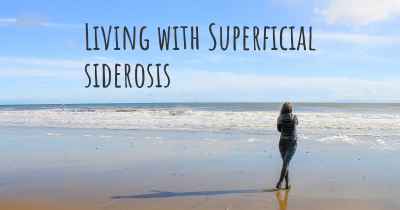What are the best treatments for Superficial siderosis?
See the best treatments for Superficial siderosis here

Treatments for Superficial Siderosis
Superficial siderosis is a rare neurological condition characterized by the deposition of iron in the superficial layers of the brain and spinal cord. It is typically caused by chronic bleeding in the subarachnoid space, often due to a previous head injury, tumor, or vascular malformation. The iron deposits can lead to progressive damage to the nervous system, resulting in various symptoms such as hearing loss, balance problems, and cognitive decline.
While there is currently no cure for superficial siderosis, several treatment options can help manage the symptoms and slow down the progression of the disease. The choice of treatment depends on the individual's specific symptoms and the underlying cause of the bleeding.
1. Surgical Interventions
In cases where the source of bleeding can be identified, surgical interventions may be considered. This could involve repairing a vascular malformation, removing a tumor, or addressing any other underlying cause of the bleeding. By stopping or reducing the bleeding, further iron deposition can be prevented, potentially slowing down the progression of superficial siderosis.
2. Iron Chelation Therapy
Iron chelation therapy involves the use of medications that bind to excess iron in the body and help remove it. This treatment aims to reduce the iron deposition in the brain and spinal cord, potentially alleviating symptoms and preventing further damage. The most commonly used iron chelator for superficial siderosis is deferiprone, which has shown promising results in some patients.
3. Symptomatic Management
Managing the symptoms associated with superficial siderosis is an important aspect of treatment. This may involve:
- Hearing aids: Hearing loss is a common symptom of superficial siderosis, and hearing aids can help improve auditory function.
- Balance exercises: Physical therapy and balance exercises can assist in managing balance problems and reducing the risk of falls.
- Cognitive rehabilitation: Cognitive decline can be addressed through various cognitive rehabilitation techniques, including memory exercises and mental stimulation.
- Speech therapy: Speech therapy may be beneficial for individuals experiencing speech difficulties due to superficial siderosis.
- Assistive devices: Depending on the severity of symptoms, assistive devices such as canes or walkers may be recommended to improve mobility and independence.
4. Regular Monitoring
Regular monitoring of the disease progression is crucial in superficial siderosis. This may involve periodic neurological examinations, hearing tests, and imaging studies to assess the extent of iron deposition and any changes in the nervous system. Monitoring allows healthcare professionals to adjust treatment strategies accordingly and provide appropriate support.
5. Lifestyle Modifications
While not a direct treatment for superficial siderosis, certain lifestyle modifications can help improve overall well-being and manage symptoms. These may include:
- Healthy diet: Consuming a balanced diet rich in antioxidants and nutrients may support brain health.
- Regular exercise: Engaging in regular physical activity can help maintain strength, balance, and overall fitness.
- Stress management: Stress reduction techniques such as meditation or relaxation exercises may help cope with the emotional impact of the condition.
- Adequate sleep: Prioritizing sufficient sleep can contribute to overall health and well-being.
It is important for individuals with superficial siderosis to work closely with a healthcare team, including neurologists, neurosurgeons, and other specialists, to determine the most appropriate treatment plan for their specific needs. While there is no cure, early diagnosis and intervention can help manage symptoms and potentially slow down the progression of the disease.
Symptom treatment is expansive, often primarily focusing on improving balance/gait and helping patients deal with sensorineural hearing loss.
Posted Apr 15, 2017 by mcl3086 500








